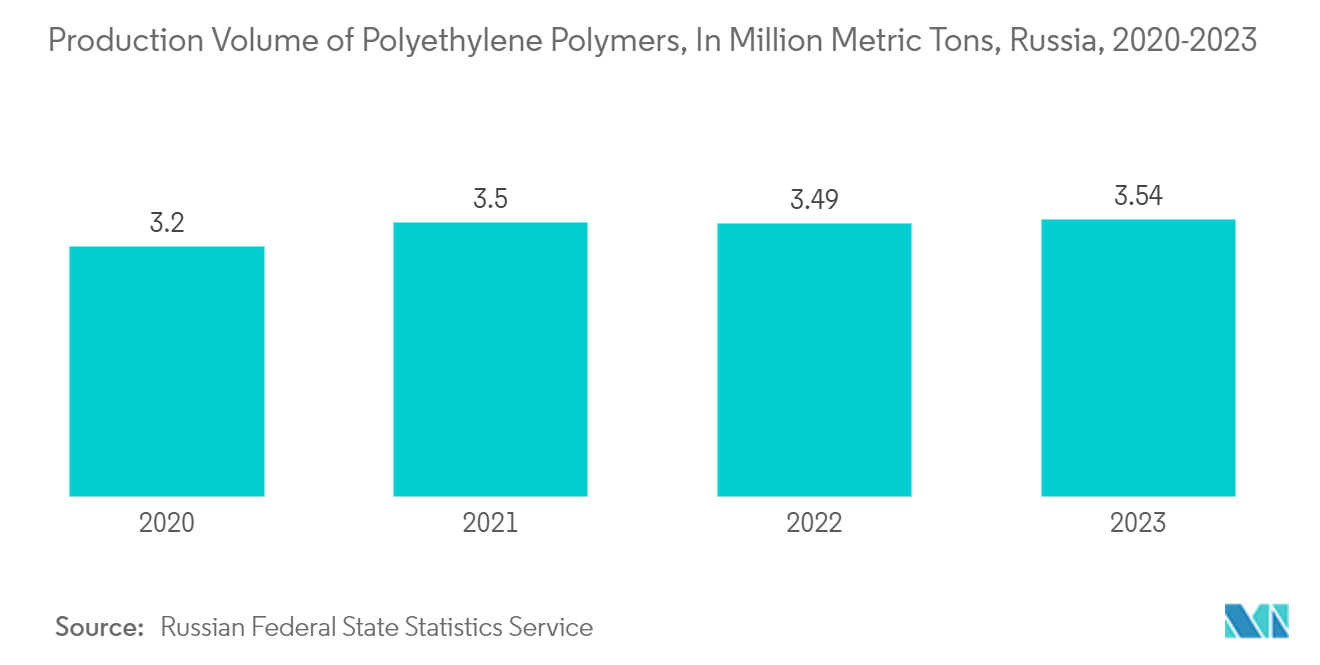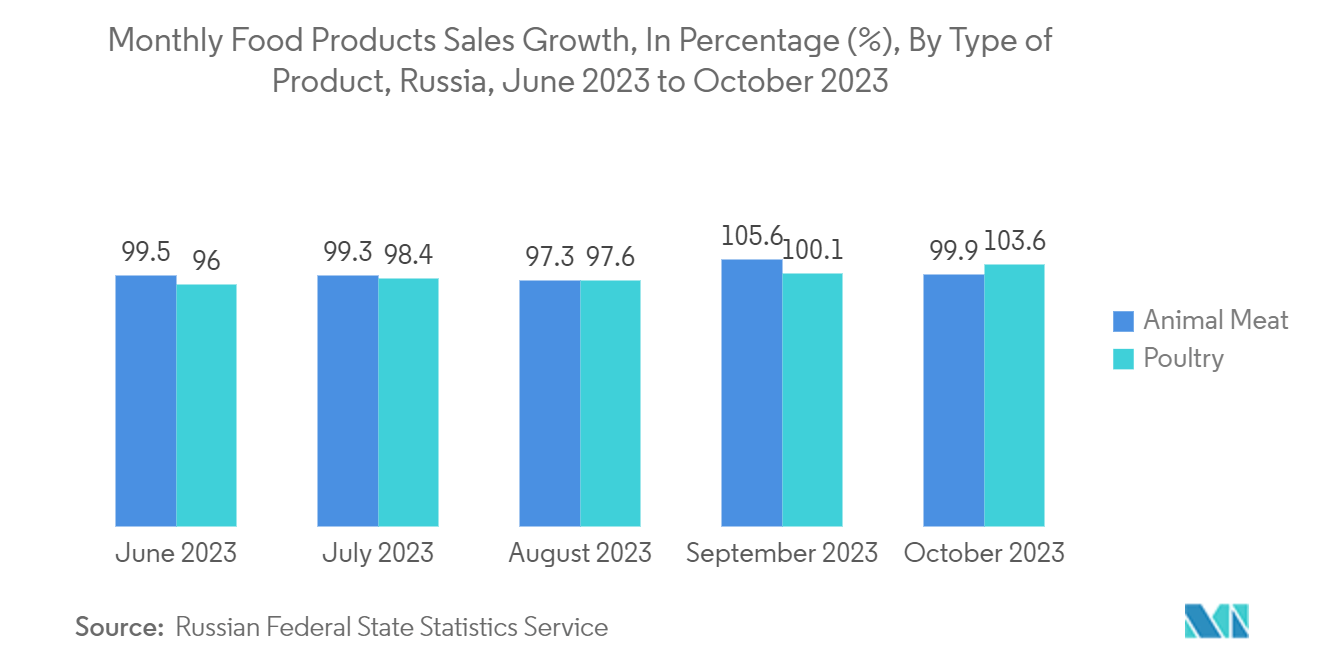Market Trends of Russia Flexible Plastic Packaging Industry
Plastic Materials Like Polyethylene To Witness Growth in Russia
- The demand for flexible plastic packaging remains robust, driven by responses from the market for food, beverage, and personal care products. The market shows resilience, with a notable shift toward online retail distribution. This shift aims to amplify the need for flexible plastic packaging, ensuring timely delivery of raw materials and finished products to end-users.
- In April 2024, Delovoy Profil reported that Russia witnessed a notable surge in the production of primary-form ethylene polymers over the past few years. Specifically, from 2018 to 2023, the country's polyethylene production escalated from 26.6% to 33.02% of its plastic output.
- Turkey emerged as the second-largest consumer, showing a notable upward trend. Exports to Turkey surged by 1.5 times over two years, rising from 270,000 tons in 2021 to 428,000 tons in 2023. China and Turkey absorbed up to 90% of Russia's polyethylene exports. Vietnam, on the other hand, entered the scene as the third-largest market. At the same time, shipments to Vietnam saw 2.5 times increase from 2021, with the absolute volume at 63,000 tons in 2023.
- Polyethylene is a thermoplastic resin that is lightweight and partially crystalline. Its primary application is packaging, including plastic bags and films. Polyethylene boasts superior chemical resistance, minimal moisture absorption, and effective sound insulation properties. According to the Russian Federal State Statistics Service, the production volume of polyethylene polymers in Russia was 3.2 million metric tons, and it reached 3.54 million metric tons in 2023. The rise in production volume is expected to drive the growth of the country's flexible plastic packaging market.
- Supply chain bottlenecks, escalating energy costs, and geopolitical tensions pose significant challenges to Russia's flexible plastic packaging market. However, buoyed by mounting demands for convenient packaging solutions, especially in sectors like food and beverages, the market is projected to grow.

Food Industry to Push the Market Demand
- Food production and processing play a pivotal role in Russia's economy. Over the last decade, Russia has witnessed a doubling in the import of food processing and packaging equipment, dominating 87% of the market. The food processing sector, comprising over 30 industries and 43,000 active organizations, contributes significantly, making up 11.5% of Russia's total output.
- The evolving lifestyle in Russia, marked by a faster pace, has heightened the demand for on-the-go products. Packaged foods, with their enhanced shelf life and easy storage, are increasingly appealing to the modern Russian consumer, while retail formats are adapting to these changing preferences.
- The Russian Federal State Statistics Service reported a notable increase in food product sales between June and October 2023. Specifically, sales of animal meat rose from 99.5% in June to 99.9% in October, while poultry sales jumped from 96% to 103.6% over the same period. Cheese (fatty) sales also saw growth, increasing from 99.4% in June to 102.2% in October. This upward trend in food product sales is anticipated to stimulate demand for flexible plastic packaging within the Russian market.
- The country is also focused on recycling plastic packaging products. According to the Flexible Packaging Association, Russian law shifts recycling responsibility to manufacturers. Since 2015, Russian legislation mandates that manufacturers either handle the recycling or disposal of their product packaging or face a tax ranging from 1.5% to 4.5% of production costs. With Russia lacking a robust waste sorting system, many companies opt to pay the tax.
- Moreover, the Russian supermarket sector is witnessing a notable transformation, marked by swift expansion, strategic mergers, and a pivot toward digital retail platforms. Russian supermarkets are notably on an upward trajectory, with annual turnover surging by as much as 14%. This growth is fueled by a confluence of factors, including increased consumer expenditure, strategic acquisitions, and the broadening presence of brick-and-mortar and online retail outlets.


